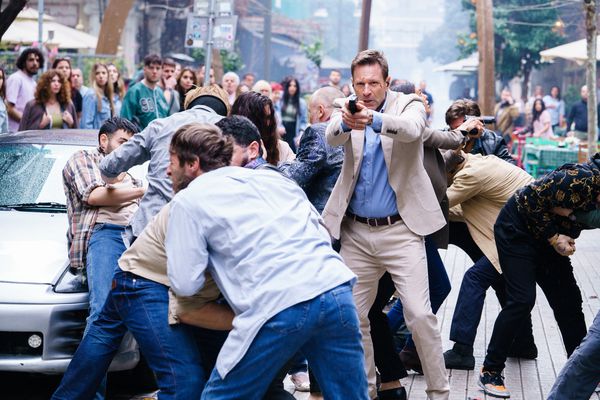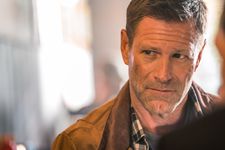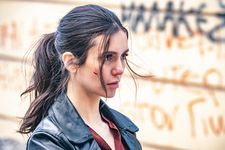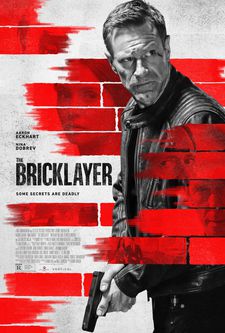 |
| The Bricklayer |
When it comes to action that keeps you on the edge of your seat, instinct and experience count for a lot more than big budgets and CGI. Renny Harlin may not be making big studio blockbusters at present, but fellow professionals and fans alike know that he can deliver the thrills they’re looking for. When he and I met to discuss The Bricklayer, shortly after it reached cinemas in the US, the Finnish-born director was clearly pretty excited himselves. He loves making films like this, he tells me, as we go on to discuss his work with star Aaron Eckhart and his next project, a reboot of Bryan Bertino’s The Strangers.
“I think for an action filmmaker, I always had that dream of doing a spy thriller, my version of a James Bond kind of a movie,” he says, explaining what drew him to The Bricklayer. “So when I read this, I immediately felt like I could tell a good character story and an entertaining action story that is rooted in reality. And that's what I like. I prefer stories that feel more real than superhero stories.”
This feels quite real compared to a lot of spy movies, i note. In terms of in the combat, for instance, the sound contributes a lot – it really sounds like people are getting hurt.
“I've had that goal since very beginning of my career,” he says. “Even when doing movies like Die Hard 2 or Cliffhanger, in terms of my visuals and how I use the camera, I try to put the audience in the driver's seat, make them feel like they become the characters. And maybe one of my trademarks is that I try to make the choreography and the geography very clear. I get irritated sometimes in modern cinema where the cuts are so fast and the shots are so tight that I can't really tell what's going on and where people are in relation to the other person. I try to make that clear so that people understand what the stakes are, what the danger is, where everybody is.
 |
| The Bricklayer |
“Then I try to make the violence realistic in a way, instead of a cartoony, in that sense that, ‘Oh, the main character is a superhero, nothing can hurt him.’ I want to show that every punch hurts and they are real people who bleed and who limp and who get hurt. That's always been my approach. Particularly with The Bricklayer. I wanted it to be a movie that harkens back to 1970s action movies with Peckinpah and Don Siegel and Clint Eastwood and Steve McQueen, that type of movie. So I wanted it to be the kind of movie that I fell in love with when I was watching movies when I was young, and not be an unrealistic superhero movie with lots of digital effects.”
When he’s saying this I’m thinking of a fight on a rooftop which takes place right at the start of the film. For the viewer, it all happens very fast, it's very exciting – but it must be extraordinarily slow to actually make it safely on the wet roof.
“Good point.” He laughs. “And I have only myself to blame for that because actually, that's a sequence that was not in the original script. And when I read the script, I said, ‘I think it really works. But it took at least 30 minutes before there was an action scene in the movie. People are coming to see an action thriller so I think we need an action scene. We have to add an action scene.’ And then I wrote this scene. I completely invented it and wrote it. And first I wrote it on the rooftop, and then I wrote it at night, and then I added rain. And then I added an elevator sequence. And so I really painted myself into a corner with that one, and it became the most challenging sequence in the whole movie to shoot.
“You don't think of those things when you're watching a movie. But how do you go to a rooftop safely with actors and a crew of 200 people? And how do you light a rooftop? How do you create rain on a rooftop and all those issues? So it was a very challenging sequence to do. But it was also a fun sequence. I planned it very carefully because when I wrote it, I saw it in my head. I designed the shots and my stunt coordinator designed the fighting. And Aaron wanted to learn every bit of the choreography himself. We had stunt people there, but everything you see Aaron do, it's him.
“it was challenging in the rain at night, it was cold, everybody was wet. It's tough to ask the actors ‘Okay, can you do that again where you are thrown onto the ground and the water is flying and then you punch the guy, and this and that?’ It's definitely challenging. You couldn't do it with a lot of actors. It's rare actors like Aaron, who is like, ‘I'm here to do the job, I'll do it. I'm not going to complain that it's cold and it's wet and all that. I'm just going to do it.’ It's a mixture of having a great time, having a lot of fun, creating that, and total misery for everybody, just hoping that the night will be over and they could go home and get dry and warm.”
He is clearly passionate about this kind of work, having been doing it for a long time now, but what is that makes it so appealing to him?
“Well, it is that doing these kind of movies, I totally feel that I'm still the kid that I was when I was eight years old in the sandbox with all the toys and all my friends creating scenarios. And now the tools are bigger and the stakes are higher and it's expensive and it's time consuming. I just consider myself very fortunate that I get to do this because for me, it's like going back to childhood and just playing. It's just playing and creating stuff to entertain others. And whether it's a rain sequence at night or it's the scene around the pool at the nightclub, those scenes, when they come together, when you create a good choreography in the fight and then you shoot it and you find the right angles and you know it's going to come together, it's great stuff.
 |
| The Bricklayer |
“It’s the same thing with the car chases. I just see it in my head, and then it's just a matter of having 200 people there help me realise it and being able to put it on film. And it's a great feeling of satisfaction when it comes together. The visuals and the sound and the music and everything, and doing it for real, doing it on camera and not doing it digitally, that's what gives me great satisfaction.”
Where a lot of action directors tend to stick to that aspect of the craft, he’s also enjoyed success with films focused on drama. How does he bring those things together in a film like this and strike the right balance, making room for the acting?
“I think that's really a key,” he says. “Aaron calls me a softie in that I'm really a sucker for the emotional scenes and the character scenes. Whether it's Aaron's character lighting candles alone in the church, or it's him kind of getting together with his ex lover and then talking about the past and feeling this pull and attraction toward each other, but knowing that it's too late and that train has left the station. I love those scenes. And my actors know that I get totally emotional when I'm shooting those scenes. To me, they are, definitely, equally as important as the action scenes. Without those scenes, you just have characters fighting and doing action, and it's worth nothing. It's those scenes where you really relate to the characters and feel for them and understand them. They make those characters human and then also make the action matter.”
We do actually see Aaron’s character doing some bricklaying. Did that inform the way he thinks and the way he moves in the action scenes?
“Yes, definitely. The backstory is that his father was a bricklayer and he learned that craft when he was a teenager. It's something that he finds peace in and something that he always goes back to. It just gives him a kind of a Zen type of a mindset. And that's the same thing that he applies to his life, how he carries himself and how he fights. He's not a martial arts guy or something, he's a bricklayer. He has a very basic way how he does things, but it works.”
The pace of the film is strong all the way through, and that’s something one also notices in his other work, like Bodies At Rest or Deep Blue Sea. Is it also something that he sees in his head at the start?
“Yes. When I read a script, especially when I like a script, I see it as a movie in my head and I can flip the pages back and forth and just kind of rewind and forward the movie in my head. Of course, then a lot of things will change based on the locations and the story and the actors and their shooting situation. But basically it's in my head from the beginning. And the main thing I think I've learned to do more when I make movies is just to keep the pace going.
“In the beginning of my career, I might have done some long shots that crane around and find the character, and that still applies to certain situations. But basically, I know that those things mostly will be cut out, that the movie has to keep moving. You have to move from one situation to another, whether it's an emotional scene or an action scene, dramatic scene, dialogue scene. There's just a certain amount of dialogue you can have without overtelling the audience things. They have to get the emotion and get the story from certain sparse information. And mostly it's best if it comes visually instead of somebody explaining the whole plot. So, yeah, there's definitely a balance there that you try to always keep going because in this kind of a movie – I think any kind of a movie, in a way – people get bored if nothing happens. You have to have a pace going.”
 |
| The Bricklayer poster |
The Bricklayer is based on a book with a sequel – so has he considered making the next one?
“I would love to,” he beams. “You know, in today's world, it's all based on the success of the movie and how much people enjoy it and if they want to see a sequel. But I love the character of Aaron and also Nina. I love both of their characters and I'd love to see them together go on another journey. And I already have in my head what that would be. So let's hope that the movie gods smile at us and give us that opportunity. It would be really fun.”
Finally, we go on to discuss The Strangers.
“We did something crazy last year,” he says, “which was that we shot three movies at the same time, three chapters of the story. My Strangers is based on the original movie. It ignores that there were sequels. It's really an homage to the first movie. I would say the first chapter of the trilogy is really a remake of the original movie with different characters, certain different storylines, different events, but basically it honours the original movie, which I think the fans will want to see. And then the Liv Tyler character, she survives the first movie, barely, and then we follow her character from there on and see what happens to her. What happens to an ordinary woman after such extraordinary, extraordinary circumstances?
“In the next two movies, we answer a lot of the questions that I think the fans have had for a long time about The Strangers and what is behind all of this senseless violence. And hopefully we create some new questions as well that will be answered in future movies.”
So also a lot of fun for him?
“A lot of fun. Doing a horror movie is so great because horror is kind of like telling a joke. You have to set it up, then you have to build it up and then you have to pay it off. And if you do it right and you see and hear the fans scream, then you've done your job.”
The Bricklayer is in US cinemas now.





















